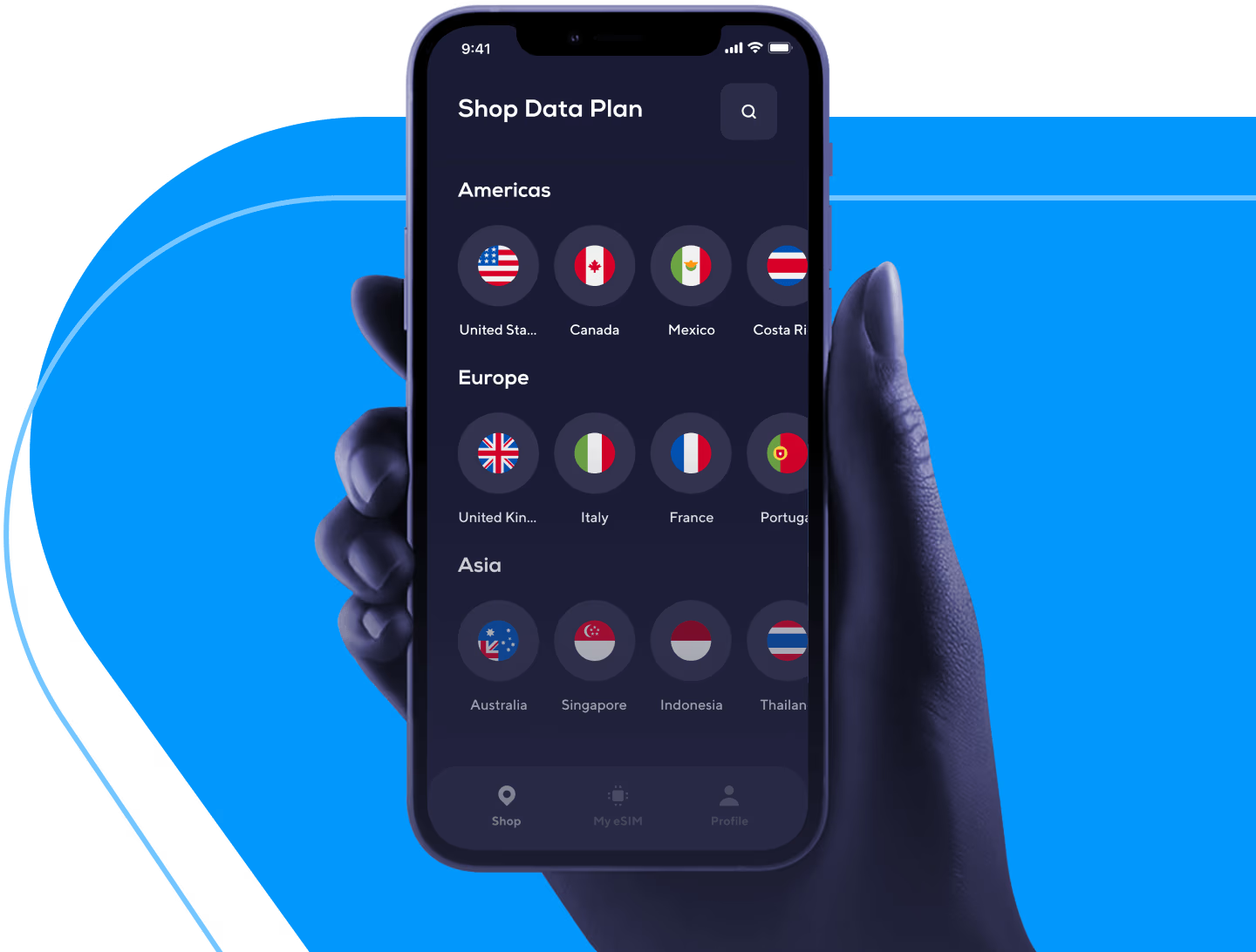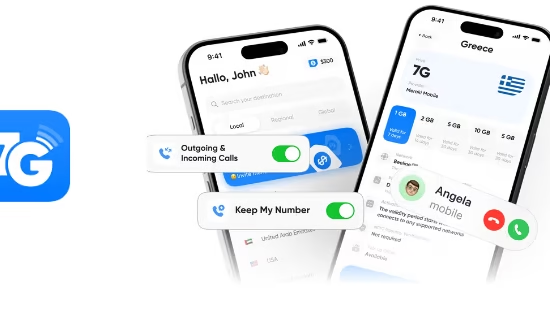
The Latency Report Continues: Mapping the World’s Most Reliable eSIM Routes
After putting eSIMs to the test across Europe, Asia, and Africa, we’ve uncovered something speed tests alone can’t show: how jitter, latency, and packet loss shape the real digital experience for remote professionals. Now, our research is expanding into more global digital nomad corridors—and early observations are revealing clear patterns in performance.
This is not a roadmap—it’s a look at how connection quality is evolving across key regions for remote work.
South America: Where Stunning Destinations Meet Uneven Connectivity
Remote work in South America has exploded—especially in Brazil and Argentina—but mobile network consistency is still a challenge. In Buenos Aires, for example, the latency across most global eSIMs we observed stayed within a usable 60–90 ms range, but jitter occasionally spiked to 20+ ms, which disrupted video calls during busy hours.
While we’re continuing to collect data, some regional plans — like Nomad’s Latin American eSIM — appeared more stable during casual tests, especially for 1:1 meetings and light conferencing.
In São Paulo, performance was stronger overall. eSIMs connected through local Claro and Vivo networks offered noticeably lower jitter. Ubigi and Airhub, in particular, seemed to deliver more consistent performance, though full test cycles are still ongoing. Packet loss wasn’t severe, but small interruptions were more common in public co-working spaces.
Eastern Europe: Quietly Becoming a Top Performer
Bulgaria and Romania are emerging as hidden gems for location-independent workers—not just for cost of living, but for quietly excellent mobile infrastructure.
In Sofia and Bucharest, most eSIMs tested—including Airalo, Nomad, and Airhub—showed consistently low latency, and in informal video call tests, jitter and packet loss were rarely noticeable.
One test user based in Cluj-Napoca reported that Nomad’s European regional plan held up seamlessly during multiple hours of video conferencing and cloud sync. While not a full lab benchmark, it suggests that these cities may be among the most eSIM-friendly locations in Europe.
Southeast Asia: A Test of Network Agility
Southeast Asia remains one of the most dynamic — and unpredictable—regions for remote work connectivity. Da Nang and Ho Chi Minh City performed relatively well in preliminary testing. Airalo’s Asialink plan, in particular, delivered sub-70 ms latency with tolerable jitter, even during peak evening hours, in multiple informal call sessions.
Indonesia was a different story. In Bali, latency fluctuated significantly, and some global eSIMs struggled to maintain a reliable connection, especially outside urban areas. When connected through strong Telkomsel signals, providers like Airhub showed better responsiveness — but video call quality remained inconsistent, likely due to fluctuating tower load.
In this region, the ability of an eSIM to dynamically select the best local network appears far more important than maximum download speeds.
North America: High Speeds, Uneven Prioritization
In the U.S. and Canada, eSIMs operate in some of the best-infrastructured environments globally — yet connection quality still varies based on carrier agreements and network prioritization.
In cities like Toronto and New York, observed latency often hovered around 30–40 ms. However, global eSIMs are frequently connected with lower-priority access on networks like AT&T or T-Mobile, which sometimes leads to higher jitter during busy business hours.
Ubigi, in repeated test sessions, appeared to have better prioritization in both Verizon (New York) and Rogers (Toronto). On those networks, packet loss was minimal, and jitter remained under 5 ms during full-day work cycles with active video conferencing, VPN usage, and file syncing.
Still, not all eSIMs are treated equally—even in infrastructure-rich regions.
Building the World’s First eSIM Latency Dashboard
The results from these tests — combined with input from dozens of remote professionals — are now feeding into a much larger project: a live latency dashboard that will track global eSIM quality across key nomad routes.
Instead of measuring only download and upload speeds, this dashboard focuses on the metrics that actually matter for work:
- Latency (ms)
- Jitter (variation in delay)
- Packet loss (data dropouts)
- Real-world usability during video conferencing
- Regional breakdowns by city and eSIM provider
This project is being shaped by real-world usage on the routes that matter most to digital workers — think Lisbon → Tbilisi → Chiang Mai → Medellín. With enough input, the dashboard will allow travelers to know — before they land — which eSIMs are the most stable in their next destination.
What It All Means for Remote Professionals
As the global eSIM market expands, so does the noise. It’s harder than ever to tell which providers are just selling data — and which ones are offering a truly usable connection for cloud-based, call-heavy, real-time work.
This evolving Latency Report exists to cut through the fluff. It’s a living guide—not just about bars or bandwidth, but about connection quality where it counts: during your pitch, your team call, and your upload deadline.
If you’re working from any of the cities we’ve covered (or beyond), and you want to contribute data to help map the world’s best eSIM routes, we’d love to collaborate. eSIM latency comparison
Until then — choose your eSIM not by price, but by performance. Your connection is your lifeline.











